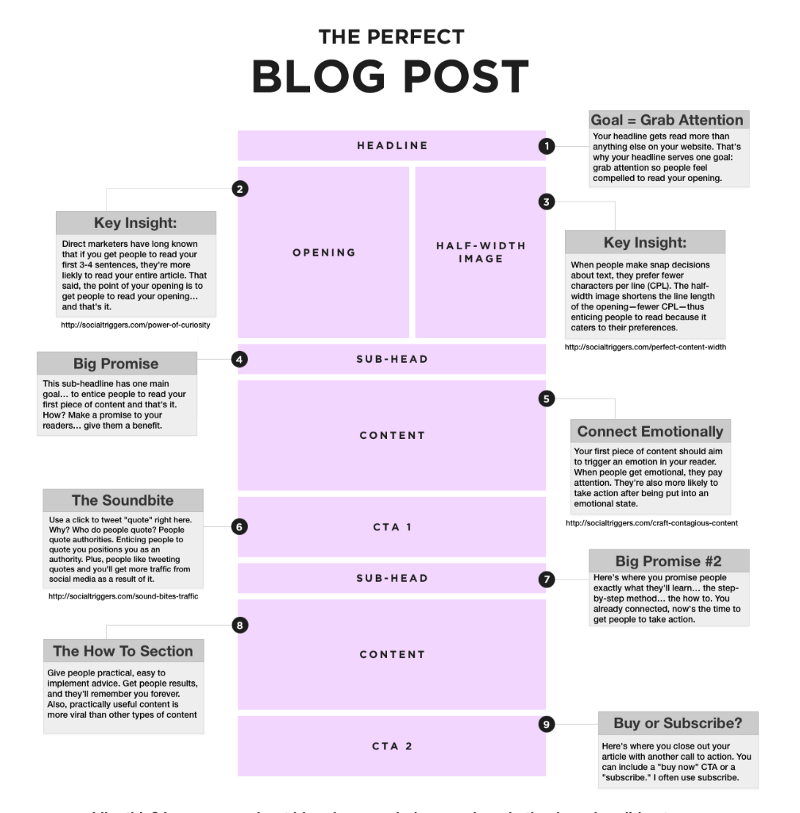The Fastest Way to Become a Thought Leader
Written by Dave Bailey

If you've ever wanted to become a thought leader, learn the exact steps you can take today to publish viral blog articles on Medium.
I never thought my writing would make such a difference.
After starting on Medium just three years ago, my essays for entrepreneurs have reached millions of people and launched my career as a CEO coach.
But it hasn’t come easy. Each article takes me between 15 and 45 hours to produce, from idea to edited essay, depending on its complexity. And it’s not always obvious which took the longest to write. The simpler the idea, the more work probably went into it.
Over the course of writing more than 100 essays, I’ve run a lot of experiments to try and improve the efficiency of my writing, but many of them haven’t worked. For example, I tried hard to work with a ghostwriter, but I just couldn’t get comfortable with another person’s words. It was quicker — and more satisfying — to write it myself.
So here’s what goes into writing one of my essays. I hope it inspires you to share your big idea with the world.
Learn new skills every week ->
Beating the Blank Page
I started my first few essays by opening a blank Google Doc and staring at the big white canvas. I’d write the first sentence. Then delete it — it sucked. I’d write another first sentence. Then I’d delete that one too — not powerful enough. Rinse and repeat ad nauseam.
I quickly realised that the first sentence wasn’t the most efficient place to start. The pressure was way too high.
And yet, when I discussed the idea for an essay with a curious friend or colleague, the material flowed from my lips far more easily. Why was this the case?
It turned out that answering questions was far easier than wrestling with a blank page. I just needed the right questions to get me started. But given that every idea is so different, how could I find questions that would apply to any given blog post?
The Perfect Blog Post
While each blog post is different, the most successful tend to follow a pattern. This diagram from Social Triggers describes an ideal structure for a blog post:

The Perfect Blog Post by Social Triggers
I realised that if the ideal structure of a blog post could apply to any idea, maybe I could reverse engineer the questions I needed to ask to end up with the right material. That’s when I came up with the following questionnaire:
- Abstract: In a sentence, what will this idea do for the reader?
- Context: Where does the burning desire to write this piece come from?
- Before: What was life like before you had this idea? What issues did you face?
- Wrong: What did you try to fix the issues that didn’t work? How did you feel?
- Aha story: What was the insight that helped you encounter this idea?
- Benefits: What are the benefits of this idea?
- Step-by-step: How can others implement this idea for themselves?
- Learning: What have you learned about this idea over time that’s surprising?
All of my essays started with answers to these eight questions. I used a Google Form to capture all my blog ideas and every time I had a new idea, I’d submit another entry.
That is, until I found an even more powerful way.
My Dictation-Powered Writing Process
I’d always assumed that dictation was expensive, but Rev.com makes it cheap and easy. For $1 a minute, you can record your voice with their mobile app and receive a 99% perfect transcript within hours (and sometimes minutes).
Incorporating Rev.com into my writing process has made it even easier to get ideas out of my head. Here’s a step-by-step of how I use it:
1) Answer the questionnaire. For each piece, I spend 5–15 minutes talking into the Rev app, answering in detail each of the eight questions above.
2)Curate the best bits. When I receive the transcript, I highlight the most interesting and powerful sentences, and then remove everything else. This leaves me with 30–40 sentences.
3) Reorder sentences under subtitles. I’ll spend some time thinking about the different parts of the blog post, giving each section a subtitle. Then, I’ll organise the relevant sentences under each title.
4) Write out the first draft. I experimented with re-recording at this point, but I’ve found that it’s easier just to write it. There’s no getting around the fact that you have to write at some point. This is by far the most time-consuming stage since it often requires further reading and evidence hunting. It’s not unusual for me to read dozens of other blog posts, or to consume a couple of books while researching an essay.
5) Edit and re-edit. After sleeping on it, I return to the first draft and read it over with fresh eyes. I’ll also pass it through Grammarly, the best spell-check out there, although it’s no substitute for a human proofreader. However, if you’re serious about improving your writing, you need to hire an editor.
My editor, Paul Fairbairn, goes beyond merely correcting grammar, he helps me tweak the flow of a piece, check my sources, and clarify my message.
‘I read this twice . . . did you mean to say X?’ he often asks me.
‘Ah yes, that’s so much clearer,’ I usually reply. ‘Thank you!’
Advice from the Pros
It was only when I started writing professionally that I fully grasped how little good writing we’re taught at school. Over the years, I’ve picked up some great advice from more experienced writers.
Here are the ten best pieces of advice I’ve received:
- ‘There are too many messages. You’re better off choosing one learning outcome and sticking to it.’
- ‘You’ve used the word “I” a lot. Take every opportunity to change it to “you” so you are speaking directly to the reader.’
- ‘The passive voice sounds academic. No-one reads academic texts for fun. Stick to the active voice.’
- ‘Your writing will be stronger if you just cut adverbs, adjectives, fillers and jargon. Use Hemmingway app to find them.’
- ‘Clichés make you sound, well, clichéd. But your own original metaphors are good . . . use more of them.’
- ‘There were some parts I didn’t understand . . . try using an example or story to illustrate.’
- ‘Be vulnerable. If your readers see you as a human being, they’ll like you more — and take more notice of what you say.’
- ‘There are a few paragraphs that you could cut and no-one would notice. If it can be cut, it must be cut . . .’
- ‘Your title isn’t quite right. Write out a least 10 titles and choose the best one.’
- ‘It’s a little on the long side. Aim for 800–1000 words — and make sure every extra word counts.’
Learn new skills every week ->
Getting the Words Out
Writing has helped me in numerous ways. It’s forced me to clarify my ideas by capturing them in writing and exposing them to the outside world. As Cunningham’s law states:
The best way to get the right answer on the internet is not to ask a question; it’s to post the wrong answer.
Publishing a consistent flow of ideas has also helped me build my personal brand, a huge asset to any business leader, especially in the B2B space. Only your best articles will be shared, so the majority of your readers will only see your best bits.
But perhaps the best part of writing is the ability to make a difference to someone, to provide ideas that help them in their life and career. And that’s a cause worth writing for.
Continue reading about business writing:
- New to your role as a startup CEO? Learn about the numerous things you will be responsible for as a startup CEO.
- Are you an empathic leader? Read about how to listen carefully to your employees.
- Having issues with your startup? Here's a guide to navigating the founder issues that you're struggling with.
Originally published Nov 12, 2019, last updated Apr 9, 2024
How do top founders actually scale?
I’ve coached CEOs for 10,000+ hours—here’s what works.
Join 17,000+ founders learning how to scale with clarity.
Unsubscribe any time.




